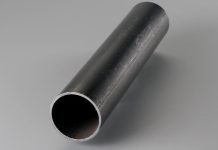Breaking down on the road is a stressful experience that every driver hopes to avoid. However, even the most reliable vehicles can face sudden problems such as flat tires, dead batteries, or mechanical failures. When such situations occur, knowing how to stay safe while waiting for assistance is just as important as calling for help. Roadside safety should always be your top priority, especially when you’re stranded on a busy road or during harsh weather conditions.
For drivers in the region, Pomoc Drogowa Chrzanów provides professional and timely support for all kinds of roadside emergencies. While waiting for help to arrive, following certain safety guidelines can reduce risks and ensure that you and your passengers remain secure until assistance reaches your location.
Move to a Safe Location
The first and most crucial step after your car breaks down is to move it to a safe place. If possible, steer your vehicle to the side of the road, away from moving traffic. Try to find a flat, visible area such as the shoulder of the road or a nearby parking lot.
Avoid stopping on curves, bridges, or narrow lanes where visibility is limited. Keeping your vehicle out of the traffic flow reduces the risk of accidents and gives roadside technicians enough space to work safely when they arrive.
If your vehicle is not drivable, turn on your hazard lights immediately to alert other drivers that your car is stationary.
Make Your Vehicle Visible
Visibility is essential for roadside safety, especially at night or during foggy or rainy weather. Turn on your hazard warning lights as soon as you stop, even before getting out of the vehicle. If you have reflective warning triangles or flares, place them a few meters behind your car to alert approaching vehicles.
As a general rule, place the first triangle about 30 meters behind your car and another one further back if possible. This gives oncoming drivers enough time to slow down or move over. If you’re driving at night, consider using a flashlight to increase your visibility while moving around the vehicle.
Stay Inside the Vehicle When Safe
In many cases, it’s safer to remain inside your vehicle while waiting for roadside assistance, especially on busy highways or in bad weather. Lock the doors, keep your seatbelt fastened, and avoid standing near the flow of traffic.
If you must exit the vehicle—for example, to set up warning triangles or inspect the damage—always exit from the side facing away from traffic. Never stand behind or directly in front of your car, as other drivers may not see you in time to stop.
Call for Professional Assistance
Once you are in a safe position, contact a trusted roadside assistance provider. Provide clear details about your location, the issue you’re facing, and any relevant conditions, such as whether you’re on a highway or in a rural area.
Professional services have the right equipment and trained personnel to handle roadside emergencies efficiently. Trying to fix complex issues yourself, such as jump-starting a dead battery or changing a tire on a narrow road, can be dangerous. Instead, let the experts take care of it.
Use Your Phone Wisely
Your mobile phone is your lifeline in a roadside emergency, but it’s important to use it strategically. After contacting roadside assistance, keep your phone battery charged by minimizing unnecessary calls or app usage. If your phone is low on power, conserve energy by turning off Bluetooth, Wi-Fi, and background apps.
It’s also a good idea to share your location with a trusted friend or family member. That way, someone knows where you are in case your phone battery dies or you lose signal coverage.
Be Cautious When Accepting Help from Strangers
While many people mean well, it’s best to be cautious when approached by strangers offering assistance. Politely thank them and explain that professional help is already on the way. Accepting help from unverified individuals can be risky, especially if you are alone or in an unfamiliar area.
Stay inside your locked car with the windows slightly open if you need to communicate with someone. If you ever feel unsafe, contact the local police to inform them of your situation.
Prepare for Nighttime or Harsh Weather Conditions
Roadside emergencies often happen when conditions are less than ideal. If you’re stranded at night, in heavy rain, or during winter, keeping warm and visible is critical. Use blankets or warm clothing if the temperature is low, and run the engine intermittently to maintain heat—just make sure the exhaust pipe is not blocked by snow or debris.
During extreme weather, avoid leaving the vehicle unless it’s absolutely necessary. It’s safer to wait inside where you have protection from the elements.
Keep an Emergency Kit in Your Vehicle
Preparation can make a big difference in how you handle roadside emergencies. Always keep an emergency kit in your car that includes essential items such as:
- A flashlight with extra batteries
- Reflective warning triangles
- Jumper cables
- A first-aid kit
- Bottled water and snacks
- A blanket or extra clothing
- A power bank for your phone
These items can help you stay safe and comfortable while waiting for professional assistance to arrive.
Stay Calm and Patient
It’s natural to feel frustrated or anxious when your car breaks down, but staying calm is key. Take deep breaths, avoid unnecessary movement around traffic, and focus on safety until help arrives.
Remember, roadside assistance teams are trained to respond quickly and efficiently, ensuring that you get back on the road safely.
Conclusion
Knowing how to stay safe while waiting for help during a roadside emergency is an essential skill for every driver. By moving to a safe area, making your vehicle visible, and relying on professional roadside services, you significantly reduce the risk of accidents or injury.
With proper precautions and a trusted local provider like Roadside Assistance in Chrzanów, you can handle unexpected car troubles confidently and safely. Preparedness and awareness are your best tools for staying secure while waiting for help on the road.




